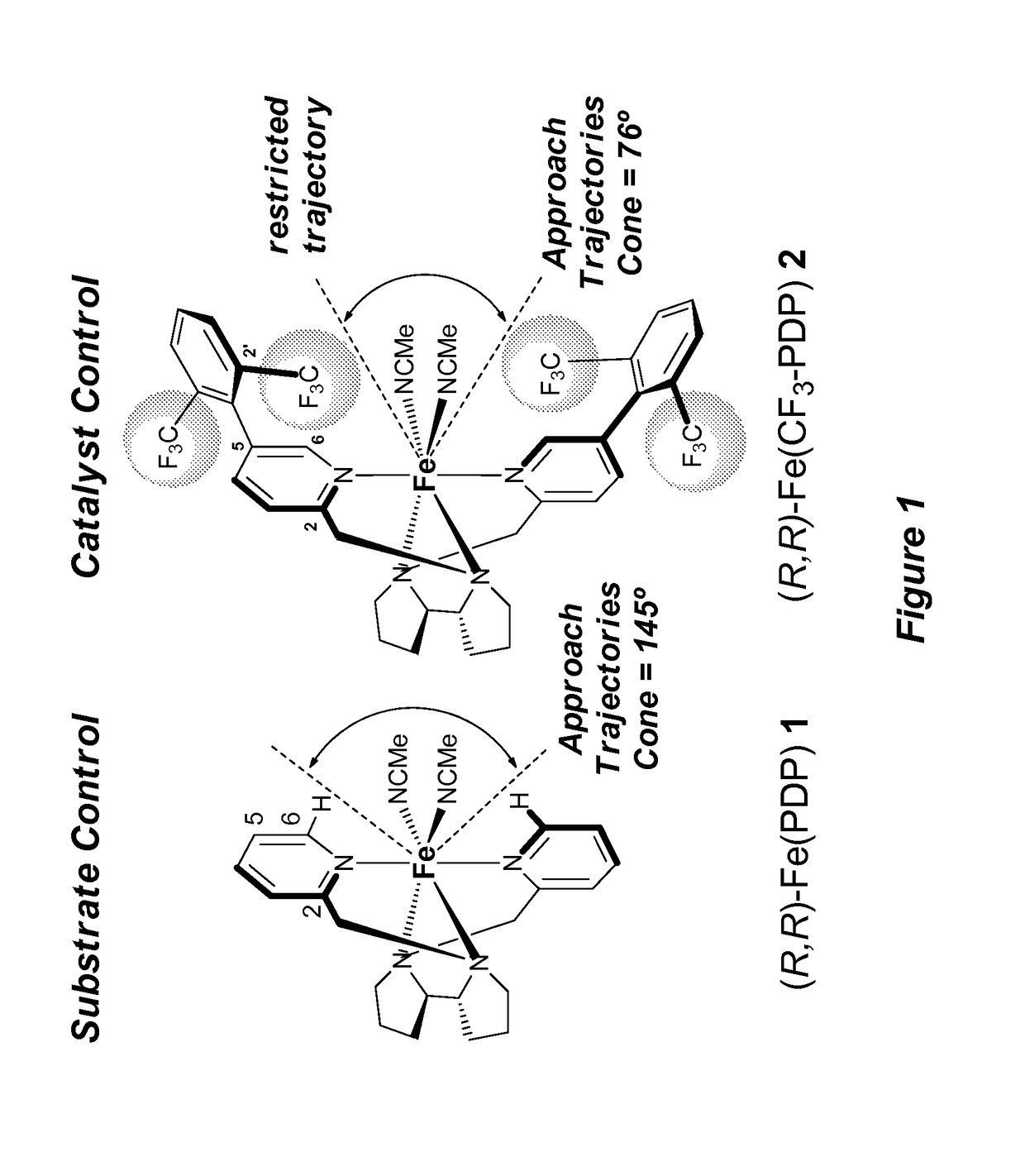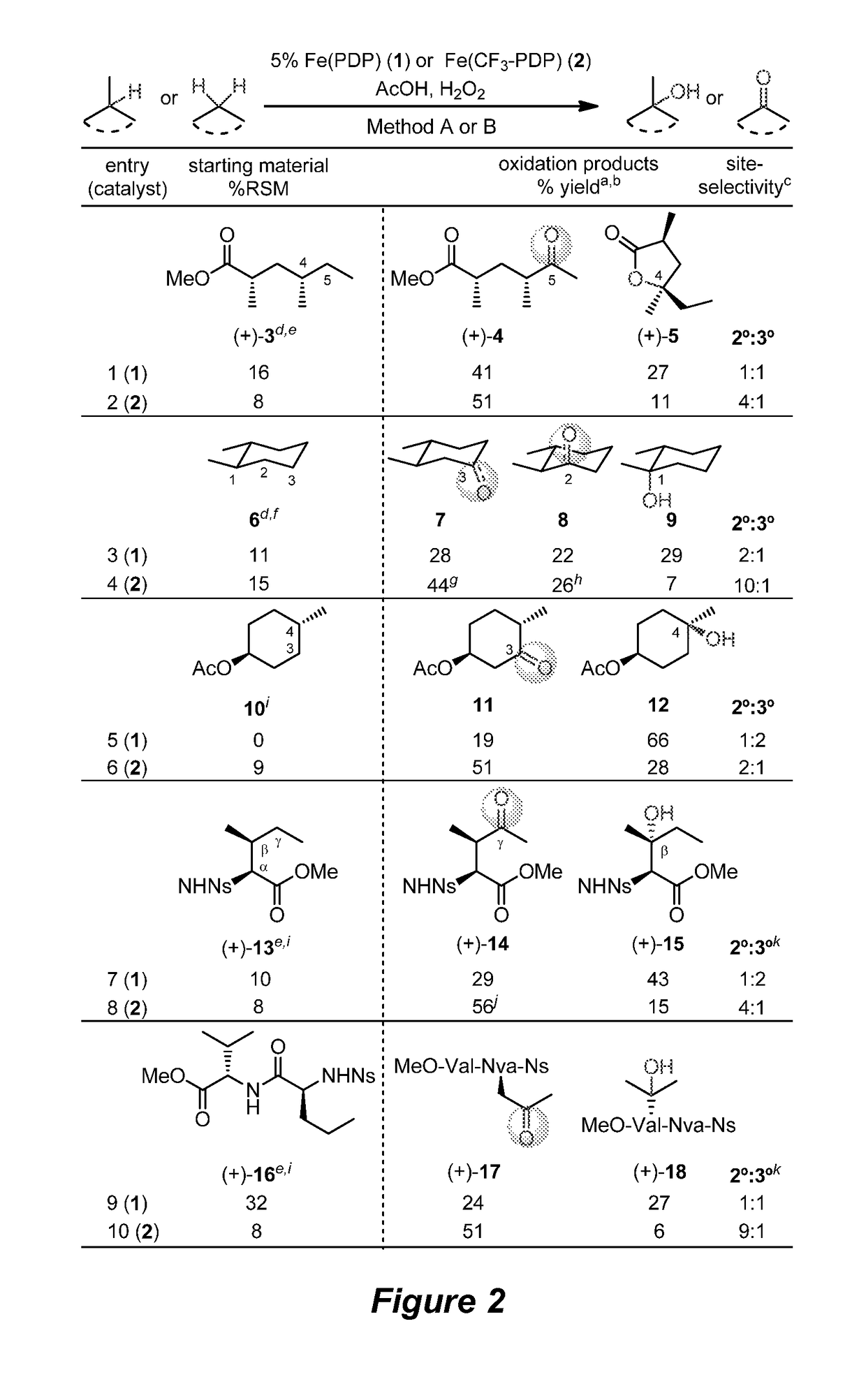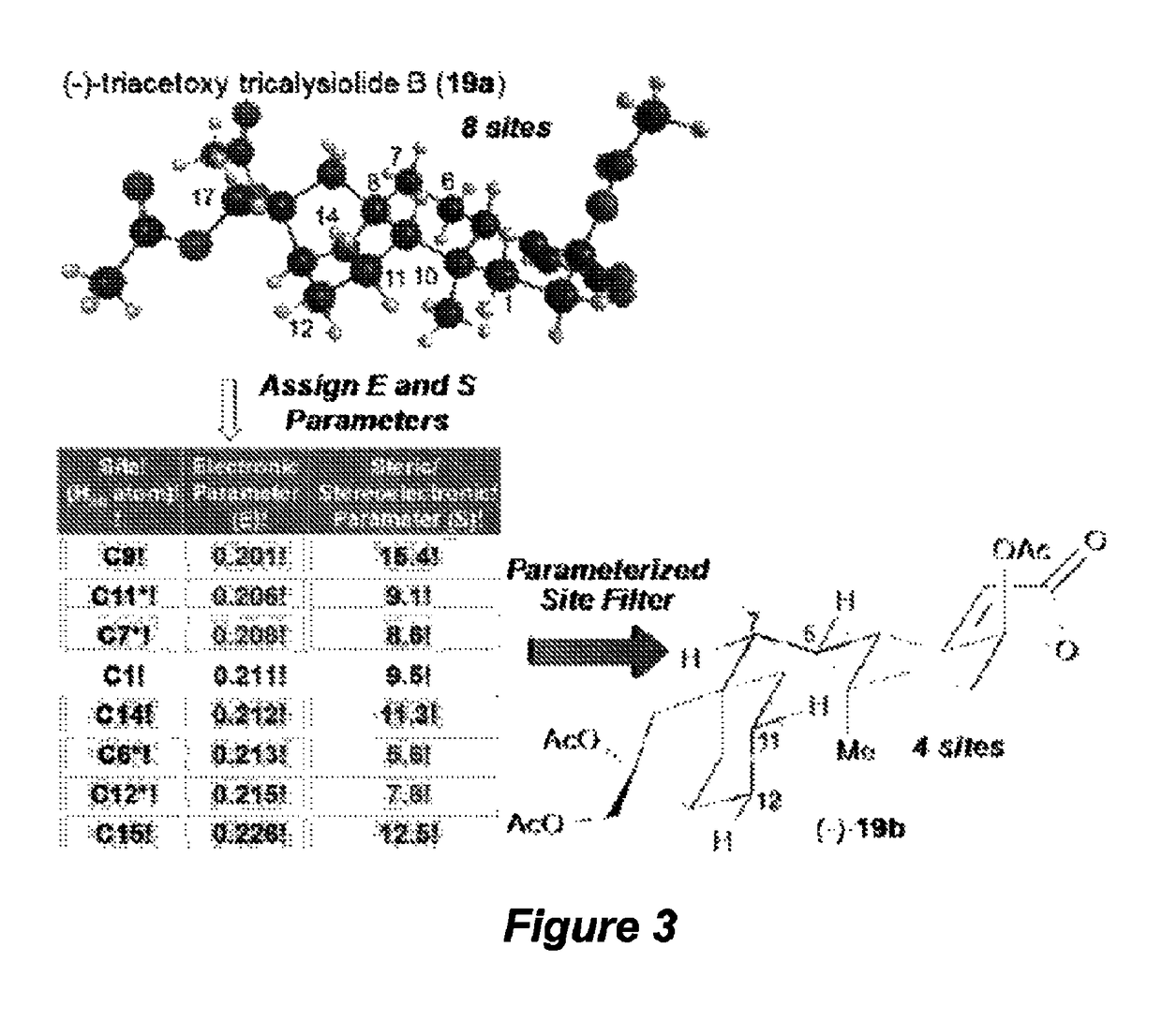Catalyst-controlled aliphatic C—H oxidations
a technology of catalysts and aliphatic c, which is applied in the direction of physical/chemical process catalysts, organic compound/hydride/coordination complex catalysts, instruments, etc., can solve the problem of limiting the general applicability of enzymes in the oxidation of a broad range of substrate molecules, and achieves the effect of enhancing or alternatively overturning the inherent oxidative reactivity of a substrate, increasing yield and/or oxidative selectivity
- Summary
- Abstract
- Description
- Claims
- Application Information
AI Technical Summary
Benefits of technology
Problems solved by technology
Method used
Image
Examples
example 1
Synthesis and Characterization of C—H Oxidation Catalyst Fe(CF3-PDP) (3)
[0162]
[0163]5-Bromo-2-(((tert-butyldimethylsilyl)oxy)methyl)pyridine. 2,5-Dibromopyridine (50.0 g, 211 mmol, 1.0 equiv, Oakwood Products) was suspended in PhMe (0.2 M) in a 2 L round bottomed flask. The suspension was cooled to −78° C. and n-BuLi (160 mL, 253 mmol, 1.2 equiv, 1.6 M in hexanes, Sigma-Aldrich) was added dropwise over 10 min. The reaction was stirred for 2 h at −78° C., at which time DMF (33 mL, 30.8 g, 422 mmol, 2.0 equiv) was added dropwise and stirring continued an additional 1 h. The dark solution was warmed to 0° C. and MeOH (211 mL) followed by NaBH4 (8.0 g, 211 mmol, 1.0 equiv, Sigma-Aldrich) were added carefully. Stirring was continued for 1 h allowing the reaction to warm to room temperature. The reaction was quenched with H2O (˜100 mL). The resulting layers were separated and the aqueous layer was extracted with CH2Cl2 (3×100 mL). The combined organic layers were dried (Na2SO4), filtered ...
example 2
Catalyst-Controlled Oxidation of Simple Linear and Cyclic Molecules
[0177]Method A: Iterative Addition Protocol. These reactions were performed open to air with no precautions taken to exclude moisture. A 40 mL vial was charged with substrate (0.5 mmol, 1.0 equiv), MeCN (0.75 mL, 0.66 M), AcOH (14.3 μL, 15.0 mg, 0.25 mmol, 0.5 equiv, Fisher Scientific), catalyst (0.025 mmol, 5 mol %) and a stir bar. A separate solution of H2O2 (34.6 μL, 0.6 mmol, 1.2 equiv, 50% wt. in H2O, Sigma-Aldrich) in MeCN (4.5 mL, 0.13 M) was added dropwise to the stirring reaction over ˜60 s. The first drop of peroxide solution instantly changes the reaction mixture from light red (when using Fe(CF3-PDP)) to a light amber. Subsequent drops of peroxide appear transiently as green in the reaction until a dark amber color is reached and maintained. When no further color changes were observed, the addition rate of the peroxide was increased to complete the addition in ˜60 s. Significant decreases in yield were no...
example 3
Methods for Electronic, Steric and Stereoelectronic Analysis
[0246]The following description provides details for computational models developed to predict the site-selectivity of oxidation on complex molecules, for example, oxidation by the catalyst systems described herein, other electrophilic C—H oxidation catalysts, as well as enzymes. The computational models may also be useful as probes of metabolism oxidations.
[0247]Computational Details. The lowest energy conformations of each molecule were located using a stochastic search and MMFF94X force field in Molecular Operating Environment (MOE) version 11 (Molecular Operating Environment (MOE), 2011.10, (Chemical Computing Group Inc., Montreal, QC, Canada, 2011)). Up to the five lowest energy conformers were submitted to further geometry optimization in Gaussian 09 (Frisch et al., Gaussian 09, Revision B.01, (Gaussian, Inc., Wallingford, C T, 2010)) using B3LYP / 6-31G(d) to locate the global minimum.
[0248]A natural population analysi...
PUM
| Property | Measurement | Unit |
|---|---|---|
| time | aaaaa | aaaaa |
| temperature | aaaaa | aaaaa |
| temperature | aaaaa | aaaaa |
Abstract
Description
Claims
Application Information
 Login to View More
Login to View More - R&D
- Intellectual Property
- Life Sciences
- Materials
- Tech Scout
- Unparalleled Data Quality
- Higher Quality Content
- 60% Fewer Hallucinations
Browse by: Latest US Patents, China's latest patents, Technical Efficacy Thesaurus, Application Domain, Technology Topic, Popular Technical Reports.
© 2025 PatSnap. All rights reserved.Legal|Privacy policy|Modern Slavery Act Transparency Statement|Sitemap|About US| Contact US: help@patsnap.com



